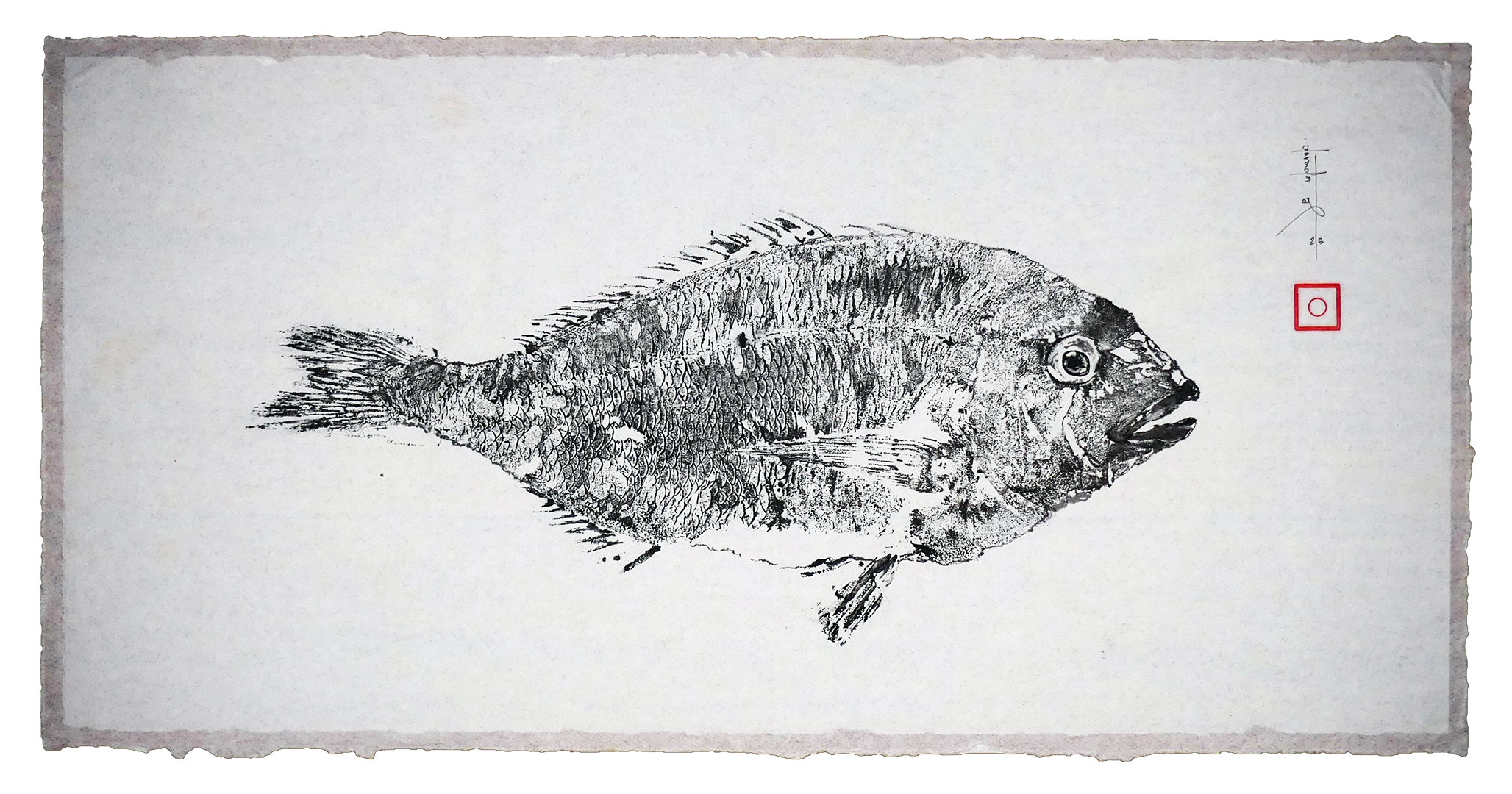
Nature prints, sumi ink on rice paper
Ongoing
“En Enoshima, una pequeña localidad pesquera cerca de Tokio, las barcas salen cada tarde al mar. Al regresar, los pescadores seleccionan algunas de las piezas cobradas, las empapan de tinta e imprimen con ellas sus propios carteles. Los peces hacen las veces de nuestras planchas de grabado: la presión sobre el papel les permite transferir su propia imagen. Su tamaño, su silueta, la textura de sus escamas, la transparencia de sus aletas… Los pescadores solo se permiten el retoque de los ojos, una licencia que me gustaría creer más emparentada con la magia y el juego que con la obsesión realista de fidelidad al modelo. A continuación, con una caligrafía grácil anotan la clase, el peso y el precio del pescado. Cuelgan el cartel en el interior de su tienda, junto a los otros muchos peces que ese día están a la venta y que van desapareciendo a medida que los clientes los compran y se los llevan.”
Joan Fontcuberta, “El beso de Judas” (1996)
Gyotaku —from the Japanese gyo (fish) and taku (to rub)— is a traditional printing method that originated at the end of the Samurai era. Fishermen used it to record the size and shape of their catches and to settle fishing contests: they applied ink to the body of the fish and pressed it onto rice paper, thus creating an accurate and lasting impression.
I apply the original direct method of Gyotaku to the natural inhabitants of the Mediterranean. I retouch only the eyes and I use sumi ink made from soot and water to print on thin traditional rice paper. Each finished print is signed with a hanko seal. It is then mounted onto another sheet of paper following the traditional wet-mounting method, using a natural paste made from flour and water, with alum stone to smooth the paper’s folds, enhance the blacks, and preserve the print.
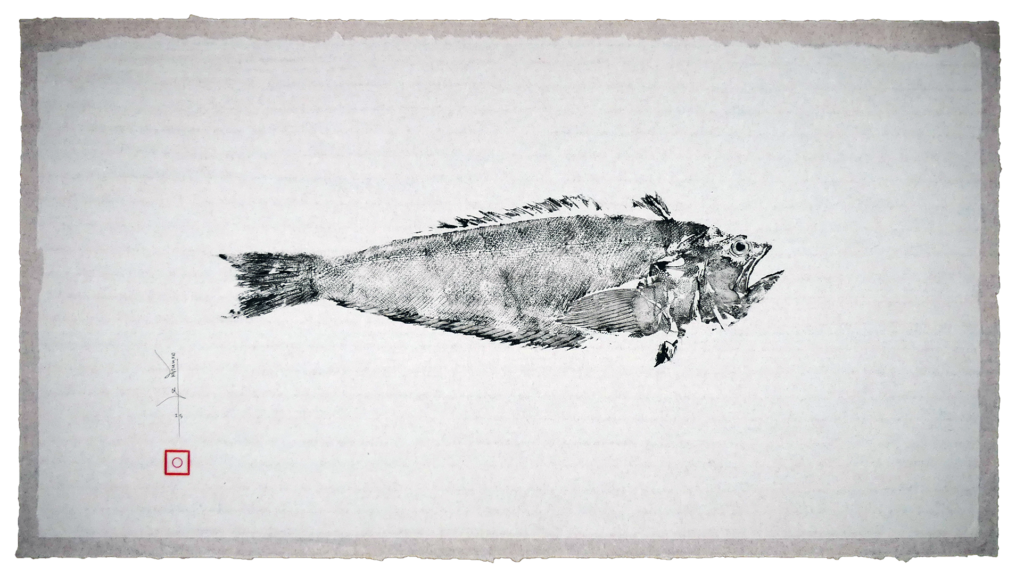
Trachinus draco
34 x 62 cm
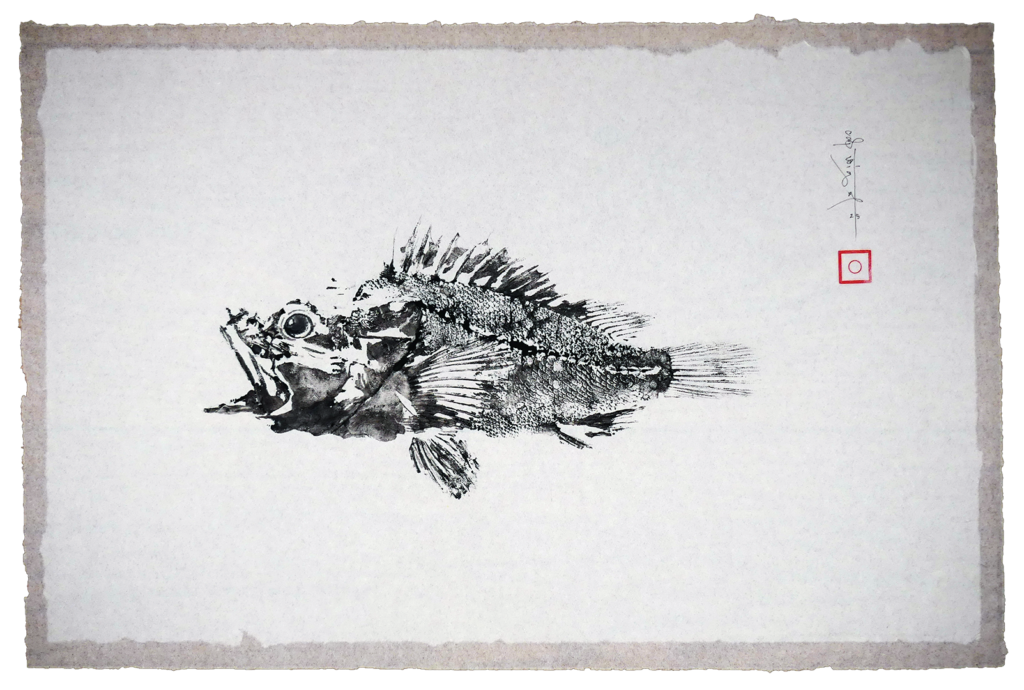
Scorpaena scrofa
31 x 47 cm
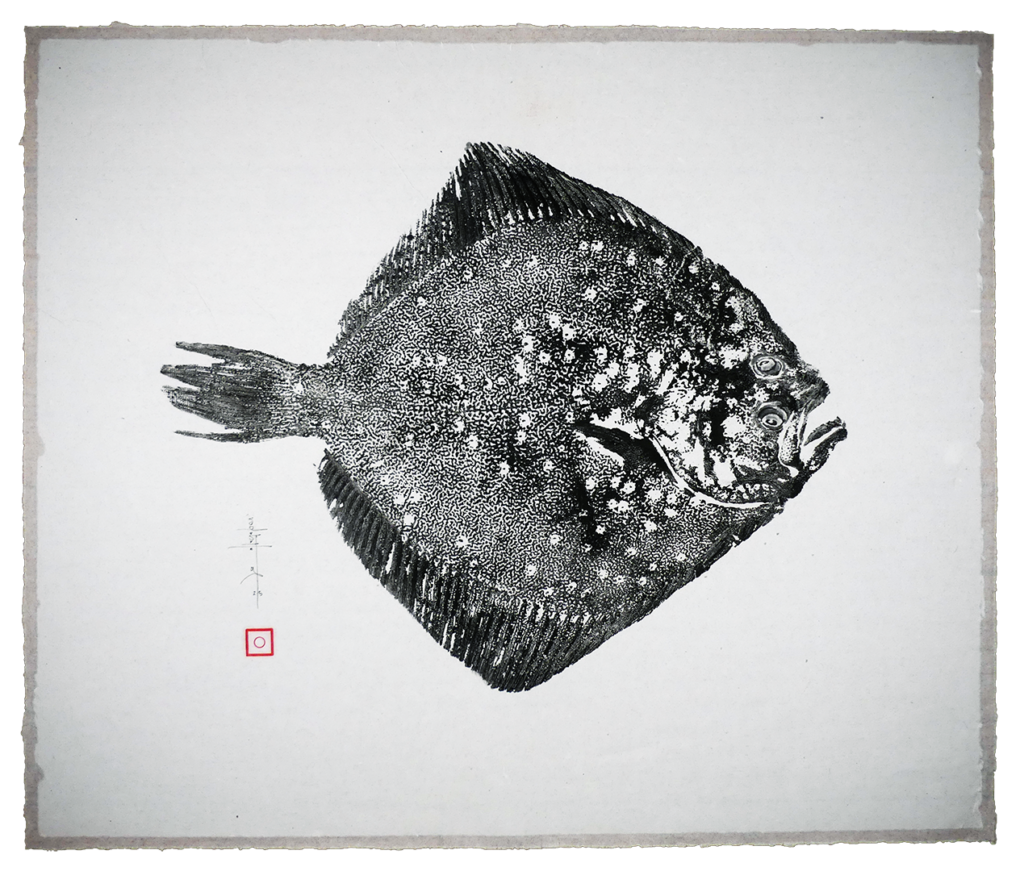
Scophthalmus maximus
47 x 56 cm

Octopus vulgaris
58 x 79 cm
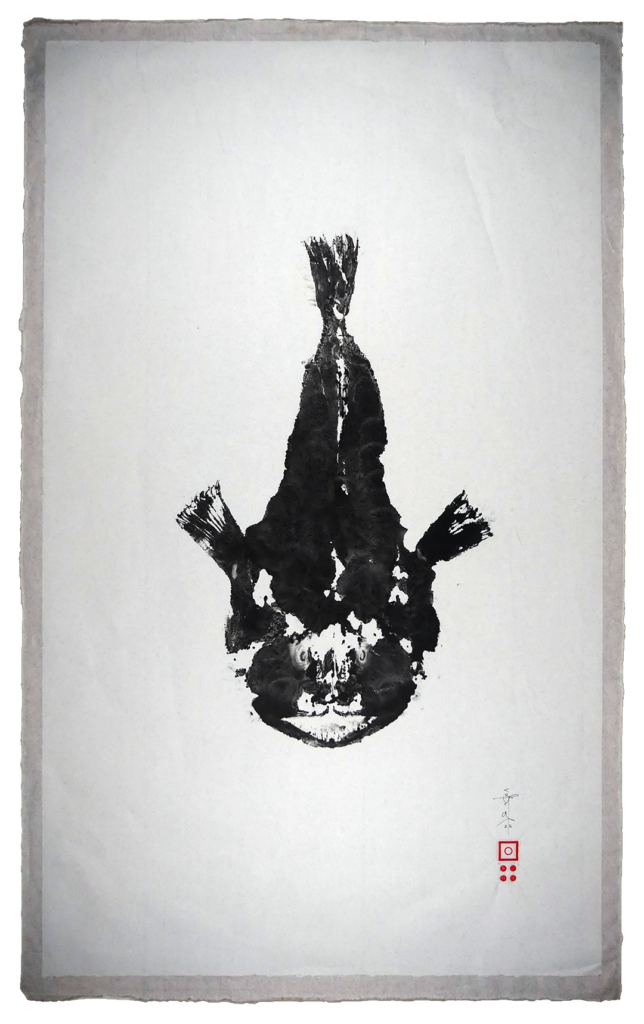
Lophius piscatorius
82 x 50 cm

Loligo vulgaris
53 x 25 mm
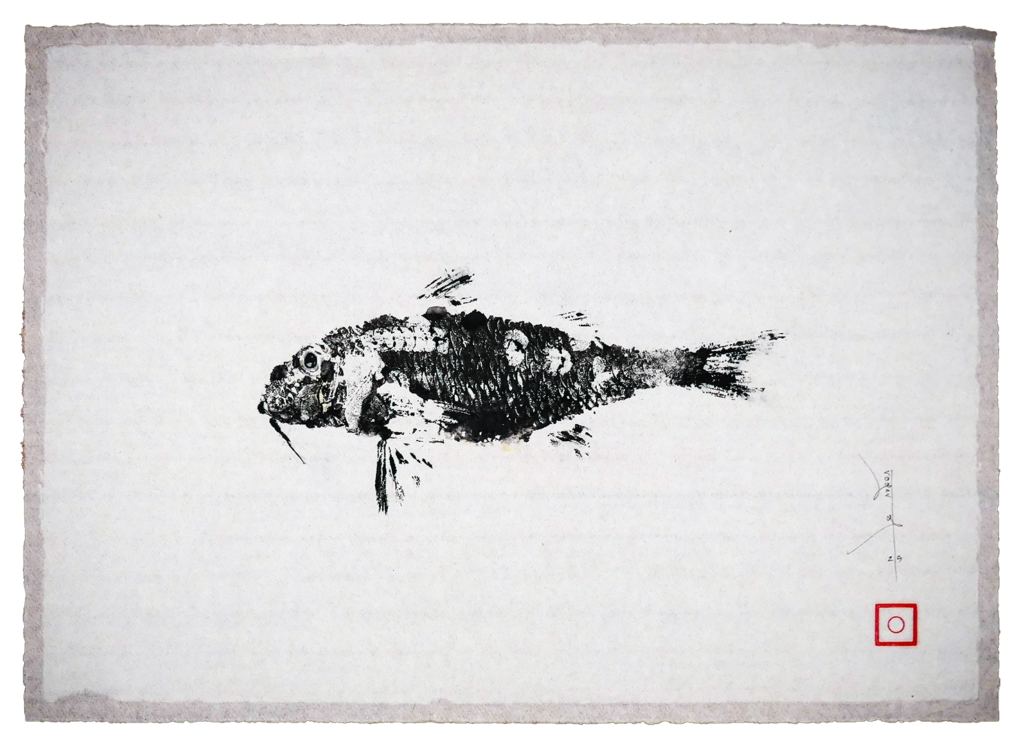
Mullus barbatus
26 x 36 cm

Pagrus pagrus
40 x 53 cm
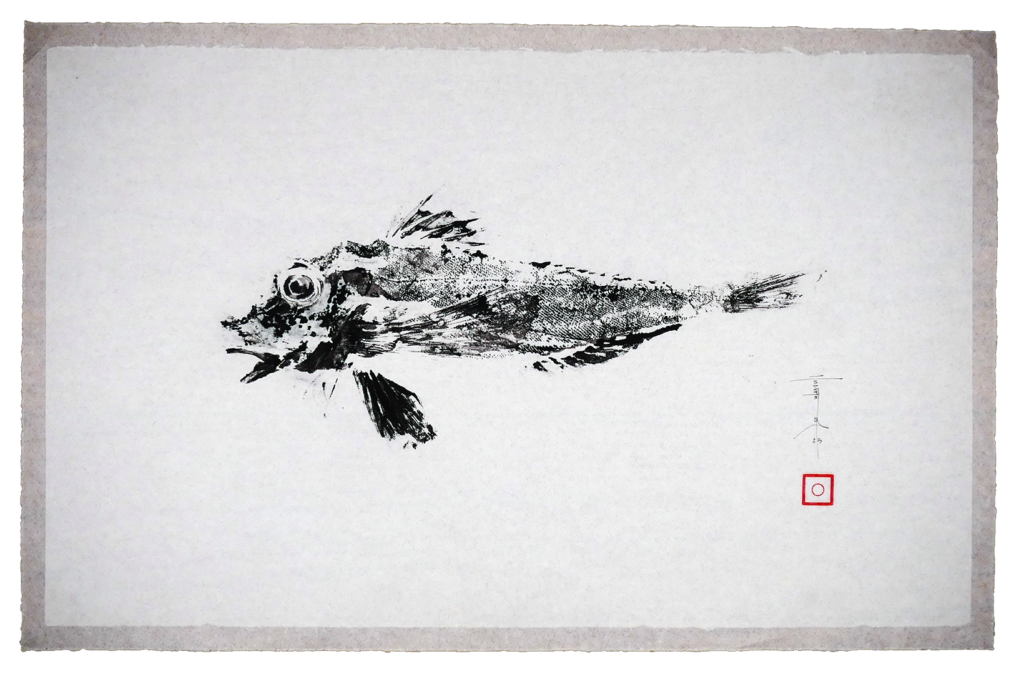
Chelidonichthys lucerna
32 x 49 cm
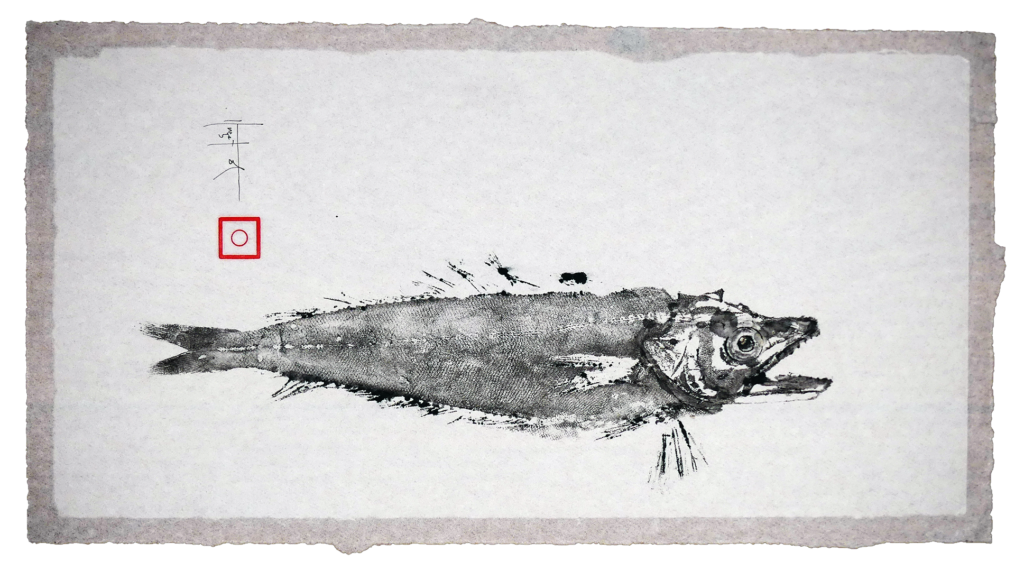
Merluccius merluccius
20 x 37 mm
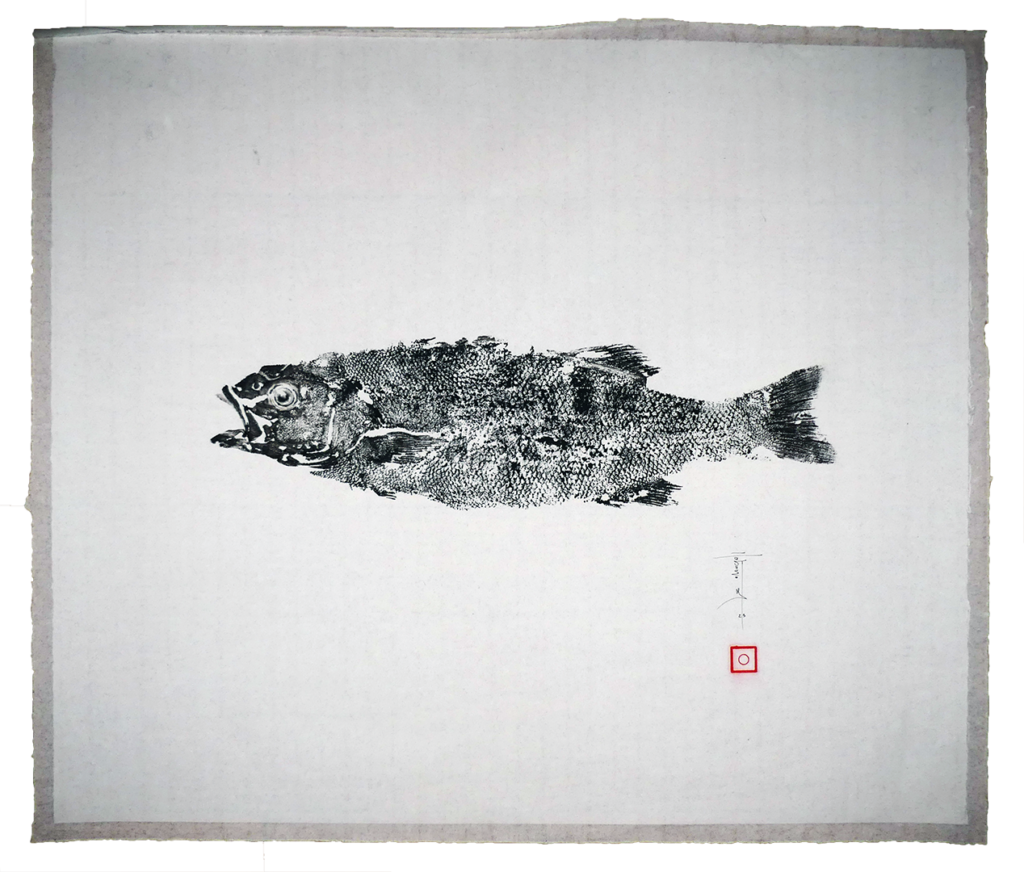
Dicentrarchus labrax
49 x 56 cm

Sparus aurata
24 x 47 mm

Sarpa salpa
24 x 47 cm